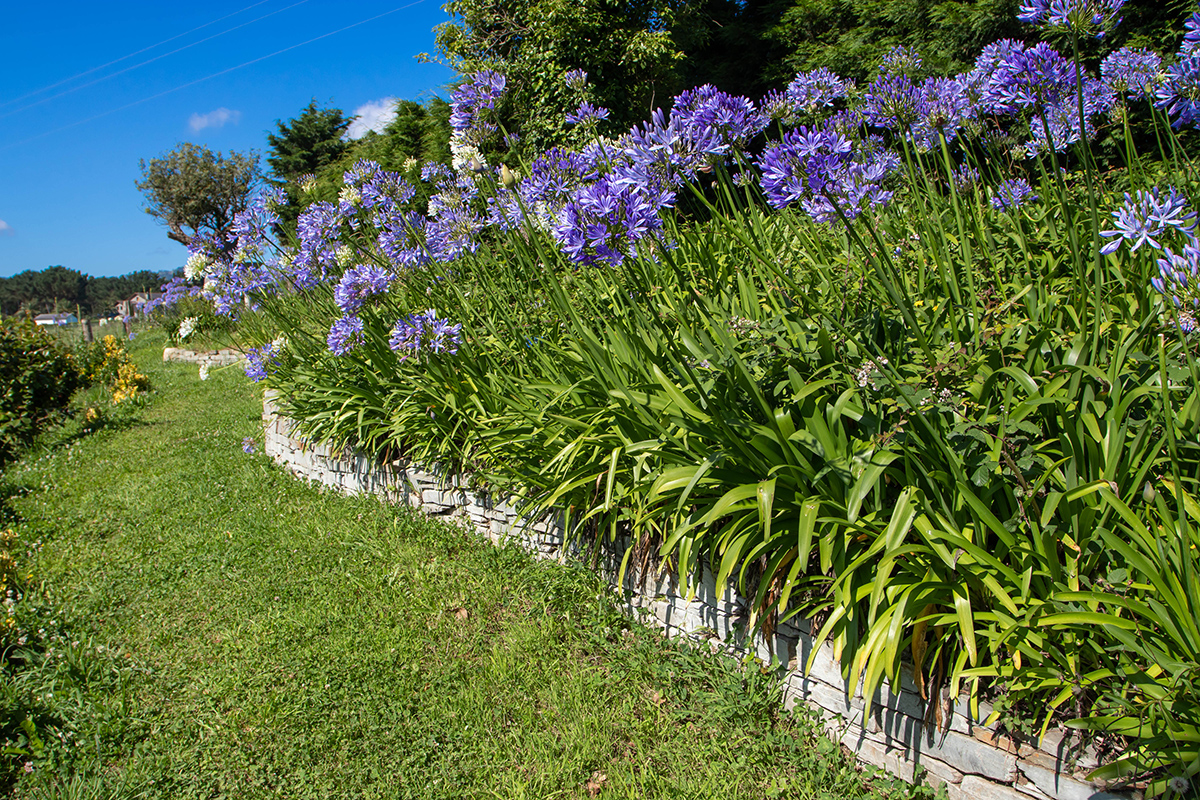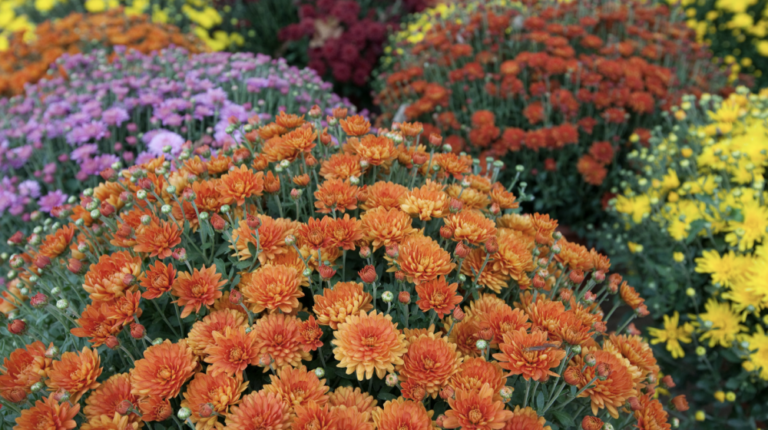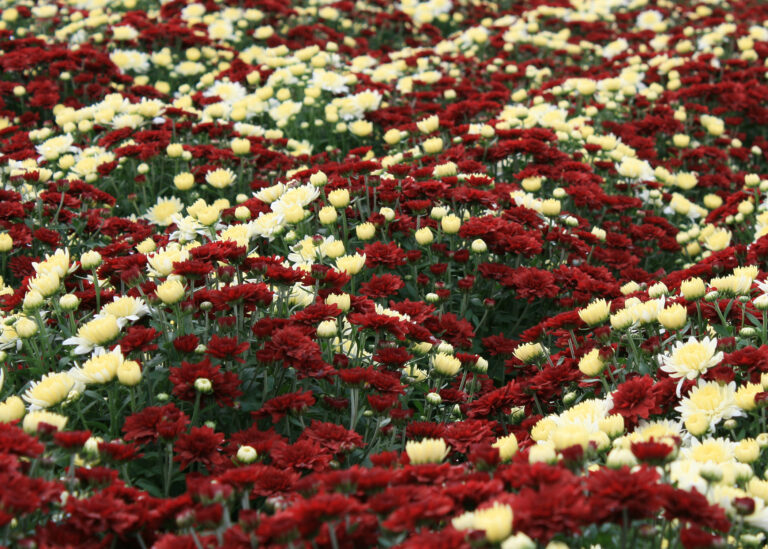
Agapanthus or lily of the Nile or African lily blue and white flowers on the stone retaining wall framing grass lawn path in the garden
by Bronwynne Bailey
I have traveled a lot this summer: Pennsylvania, Ohio, and Kentucky. I have seen the Lily of the Nile with her showy blue flowers creating a sensation. The name Agapanthus comes from the Greek words “agape” for love and “anthos” for flower. Commonly called Lily of the Nile, or African lily, the botanical name, Agapanthus africanus, refers to its origin.
Agapanthus africanus has been in the United States so long that it is actually considered an heirloom plant. Most references suggest Lily of the Nile is cold hardy to zone 8. A few are happy in zone 7. Some Agapanthus varieties are evergreen and some are deciduous. Many of the evergreens can lose their leaves in the winter and still put on a show for summer if the temperature did not get too cold.
A group called the Headbourne hybrids are cultivated for zones six through ten. Headbourne Blue Lily of the Nile (Agapanthus hybrid Headborne Blue) is a stunning, cold-hardy selection with bright blue flowers and handsome strap-like foliage. Resistant to browsing animals above and below ground. The blooms are a delight to see and will attract hungry hummingbirds and butterflies to its nectar-filled flowers.
The Agapanthus is in the Amaryllis family. While the plant is listed in bulb books, it is really produced on rhizomes, which are thick, modified stems that grow below the soil.

The leaves are basal, curved, and linear, growing up to 60 cm (24 in) long. They are rather leathery and arranged in two opposite rows. The plant has a mostly underground stem called a rhizome (like a ginger ‘root’) that is used as a storage organ. The roots, which grow out of the rhizome, are white, thick and fleshy.
Although white varieties exist, most people grow these plants for the spectacular blue flowers produced in the form of huge globes or spheres sitting atop stalks that reach 2 to 4 feet above the ground. These globes, called umbels, may have as many as 20 to 100 flowers, depending on variety and species. They bloom from late May into July.
As with most plants, soil preparation plays a vital role in successfully growing the Lily of the Nile. The rhizomes can rot in wet soils. Prepare the bed by incorporating from 3 to 4 inches of organic matter and sand and till to a depth of 8 to10 inches. This groundwork will allow maximum drainage and aeration, and will increase its chances of surviving winter.
Mulching is one of the most important cultural practices because it stabilizes soil temperatures and helps protect the rhizomes during extremely cold winters. In dry summers, the mulch helps hold moisture.
Best blooming will occur in full sun, so choose a site that receives six to eight hours of sun. Feed with a balanced fertilizer or a 1-2-1 ratio in the spring and again in the summer.
The Lily of the Nile not only beautifies the landscape but also excels in containers. Containers restrict root growth, which causes great flowering. Extra-special winter care is needed for plants grown in containers. Store the deciduous types in the garage or cellar where it is dark and temperatures remain above freezing. Do not water. Place evergreen types in cool, lighted areas and water occasionally.
Once Lily of the Nile is established in the landscape, the clumps can be left alone and may not need to be divided for six years. Divide in the fall if you want more plants.





1 thought on “Lafayette County Master Gardeners: “Agapanthus””